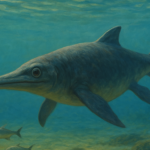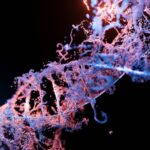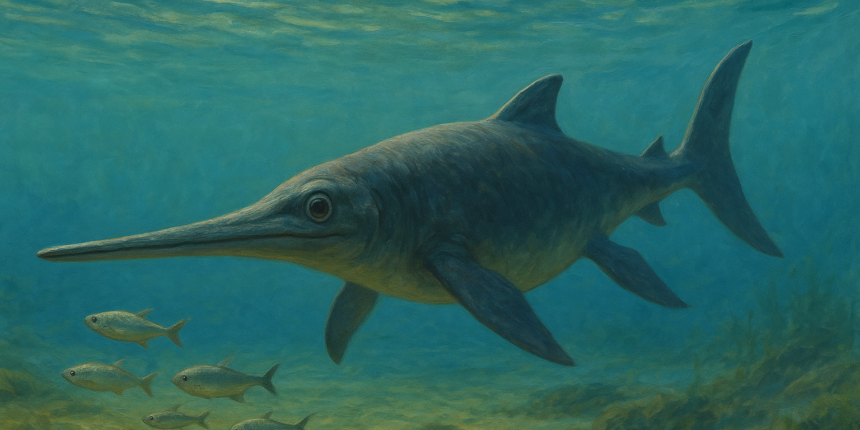A fossil unearthed in 2001 on England’s fossil-rich Jurassic Coast has now been identified as a new ichthyosaur: a sleek, dolphin-like marine reptile with a snout like a sword, offering a glimpse into a pivotal moment in ichthyosaur evolution. Named Xiphodracon goldencapensis, or “sword dragon of Golden Cap.” This ichthyosaur, which swam the warm, fish-filled seas about 185 million years ago, was discovered near Dorset’s Golden Cap.
Described in Papers in Palaeontology, it’s a rare find from the Pliensbachian Stage, a lesser-known period of the Early Jurassic, roughly 10 million years after the end-Triassic mass extinction.

Its nearly complete skeleton, with a long, blade-like snout, unique prong-like skull projections, and scars from predation, suggests a hunter built for speed and precision. Traces in the gut region suggest it fed on fish and similar prey.
Xiphodracon’s key role lies in its place within a faunal turnover — a time when older marine reptiles declined and new, more streamlined forms emerged.
Similar: Deadly Bone Disease Killed Giant Dinosaurs in Brazil
As a member of the fast-swimming leptonectid group, Xiphodracon links early, stockier ichthyosaurs to later streamlined giants, revealing how these sea reptiles adapted and thrived.
Found on Dorset’s Jurassic Coast, a UNESCO World Heritage Site famed for fossils since the 19th century, this “sword dragon” proves that even well-explored shores can hide surprises, waiting 185 million years to reveal their secrets.
Story Source: Lomax et al. (2025), published in Papers in Palaeontology. Read the study here.







